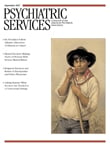Physicians and medical researchers have long known that certain psychiatric disorders are diagnosed with greater frequency among women than among men. Major depression, dysthymia, seasonal affective disorder, panic disorder, social phobia, and generalized anxiety disorders are diagnosed for women at rates that range from 1.6 to six times those for men. An increasing amount of research has been published over the past 20 years focusing on gender differences in the etiology, symptom patterns, and effective treatment of these disorders.
David Castle of the University of Melbourne, Jayashri Kulkarni of Monash University, and Kathryn Abel of the University of Manchester have brought together experts from Australia, the United Kingdom, Canada, and the United States to write a series of thorough yet concise reviews on the subject of mood and anxiety disorders among women. Each chapter of their valuable book focuses on one aspect of the general topic, from the initial emergence of the "gender gap" in mood disorders during adolescence to the clinical aspects of anxiety and depression during women's senior years.
The writing is clear and succinct, and the discussions are broad based and well supported with references to recent research. Developmental, social, cultural, biological, and psychological factors are all considered. Some of the specific areas addressed include hormonal influences on depression during childbearing years and during menopause, domestic violence and its impact on mental health, posttraumatic stress disorder, and special issues for women with bipolar disease. The chapter on pharmacological treatment of anxiety and depression during pregnancy and lactation provides extremely helpful recommendations on a clinical management challenge that constantly confronts physicians. However, I find it difficult to praise one chapter over another because every one was filled with useful data for researchers, clinicians, educators, and health care administrators.
Mood and Anxiety Disorders in Women is an excellent overview of selected mental disorders that disproportionately affect women. Clinicians in both inpatient and outpatient mental health practice will find it a valuable guide to understanding these disorders and to current treatment practices. Although written primarily from the perspective of psychiatry, clinicians working in family practice, adolescent medicine, gynecology, and public health will also find it useful in treating the women under their care. Training programs will also want to purchase this book as a reference for psychiatric residents and trainees who have few other texts that provide such a complete review of important diagnostic and treatment issues in women's mental health.

